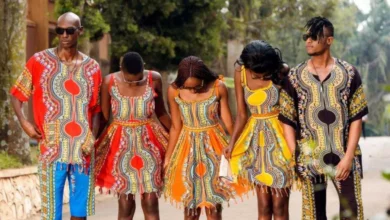The huipil, a traditional garment worn by indigenous women in Mexico and Central America, is far more than just clothing. It’s a powerful symbol imbued with cultural, spiritual, and historical significance, especially within the context of religious ceremonies. This article delves into the rich tapestry of meaning woven into the huipil, exploring its intricate designs, regional variations, and profound role in Mexican religious practices.
What is a Huipil?
At its core, the huipil is a simple, often sleeveless tunic made from woven fabric. Its construction is typically straightforward: it can be composed of one to three pieces of cloth joined together. However, the simplicity of its form belies the complexity of its design and meaning. The huipil can be long or short, wide or narrow, and its decorations can range from simple embroidery to elaborate weaving with complex patterns.
The materials used to create a huipil vary depending on the region, available resources, and specific ceremonial purposes. Cotton, wool, and sometimes even silk can be used. Traditionally, many huipiles were created on a backstrap loom, an ancient and labor-intensive method that further connects the wearer to ancestral traditions.

The Huipil as a Symbol of Identity
Before exploring its religious connections, it’s important to understand that the huipil is first and foremost a marker of identity. Each indigenous community often has its own distinct style, color palette, and set of motifs, making it instantly recognizable.
See also The Turkish Kaftan in Ottoman-Inspired Wedding Ceremonies
The Turkish Kaftan in Ottoman-Inspired Wedding Ceremonies
A woman’s huipil can signal her village of origin, her social status, her marital status, and even her role within the community. This inherent connection to identity is crucial because it influences the garment’s significance within religious and spiritual contexts.
The intricate patterns on a huipil are not random. They are carefully chosen and often hold symbolic meanings that are passed down through generations. Motifs might represent elements of nature like animals, plants, or celestial bodies, or they might depict historical events, mythological figures, or abstract spiritual concepts. Thus, wearing a huipil is not just about clothing, it is about expressing one’s heritage and connection to a larger community.
The Huipil in Religious Contexts
The huipil’s connection to the spiritual realm is deeply rooted. In many indigenous communities, the act of weaving is itself considered a sacred practice. It is often accompanied by prayers and ritualistic actions. The weaver, through her craft, is believed to be in communication with her ancestors and the spirits. The finished huipil, therefore, embodies this spiritual energy, making it a fitting garment for religious ceremonies.

Huipiles and Rituals of Life Cycle
The huipil features prominently in rituals marking significant life cycle events. For example, during a young woman’s coming-of-age ceremony, she might receive her first huipil, signifying her transition into adulthood and her acceptance of womanly responsibilities. This huipil often features motifs that reflect fertility, womanhood, and the wearer’s lineage. Similarly, huipiles can be part of wedding ceremonies, where the bride’s huipil symbolizes her new role within her husband’s family and community.
See also Traditional Greek Costumes: A Journey Through Culture and Faith
Traditional Greek Costumes: A Journey Through Culture and Faith
Funeral rites are another context in which the huipil plays a significant role. The deceased might be buried wearing their favorite huipil, or they may be wrapped in a special ceremonial one. The huipil, in this case, is not only a symbol of mourning but also a way to honor the individual’s life and ensure a peaceful transition to the afterlife. The colors and patterns often differ from those used in everyday wear, reflecting mourning practices specific to the community.
Religious Festivals and Ceremonial Attire
Many Mexican communities observe annual religious festivals and celebrations. During these events, women often wear their finest huipiles, which are specially made for these occasions. These ceremonial huipiles are usually richer in detail, with more complex embroidery and vibrant colors. The design and motifs chosen for these huipiles are often tied to the specific deities or spirits being honored during the festival.
For example, in festivals honoring the rain god, specific water-related motifs might be incorporated into the huipil’s designs. Similarly, huipiles worn during festivals celebrating the harvest may feature motifs depicting corn, flowers, and other symbols of abundance. The act of wearing these special huipiles connects the wearer to the history and mythology of the celebration and reinforces a sense of community solidarity and continuity. They are visual prayers, tangible expressions of faith and cultural memory.
The Huipil and Cosmic Beliefs
Many indigenous cosmologies see the world as existing in layers: the earthly realm, the heavens above, and the underworld below. The huipil, in some traditions, is understood to be a microcosm of this cosmology. Certain designs, like those that incorporate vertical lines, can be interpreted as symbolic of the connection between these different realms. The wearer of the huipil, therefore, becomes a living embodiment of these cosmic connections.
Furthermore, the four cardinal directions often hold great importance in indigenous spiritual beliefs, and the structure and pattern arrangement in the huipil may reflect this. Certain designs will emphasize the central importance of the wearer as being within their universe, with the world spread out across the fabric. In this interpretation, the huipil not only expresses the identity of the wearer but also their place within a grand, spiritual order.
Examples of Regional Variations
The symbolism and use of the huipil vary significantly across different regions of Mexico, reflecting the diverse cultural heritage of the country. Let’s explore a few specific examples to understand the breadth of its significance:
The Huipiles of Oaxaca

Oaxaca is perhaps the most well-known region for its diverse huipil traditions. Each indigenous group within the state, such as the Mixtec, Zapotec, and Triqui peoples, has its distinct style. Mixtec huipiles, for instance, are often characterized by complex geometric patterns and vibrant colors, often depicting animals, plants, and historical scenes.
Zapotec huipiles are frequently embellished with intricate embroidery, and are often monochromatic or very subtly patterned, and are commonly seen in white or off-white. The huipiles of the Triqui region, on the other hand, are known for their bold, colorful designs that often incorporate geometric motifs and brocade-like embellishments.
Within these Oaxacan communities, the huipil’s symbolic role is profoundly significant, particularly during religious ceremonies. The style, patterns, and colors used in a ceremonial huipil often hold spiritual significance, referencing specific deities and ancestors. The level of detail and labor put into the huipil directly reflects its significance within the community’s rituals.
The Huipiles of Chiapas
The huipiles of Chiapas are another example of regional diversity. The Chamula people, for example, are well-known for their woven wool huipiles that feature unique patterns and textures. These huipiles are often very long and heavy, and the thick wool provides protection against the high altitude climate of the region.

The design and structure of the huipil reflect the community’s social structure and their relationships with each other. During religious ceremonies, Chamula women adorn their finest, and often the more elaborate, versions of their daily wear. Their huipiles are seen as a protective layer, often used to shield against outside forces that may be harmful.
The huipiles of Zinacantán, another indigenous community in Chiapas, are characterized by their distinctive floral motifs and often pastel hues, often featuring embroidery. The floral designs are more than decorative; they symbolize the community’s connection to nature and the fertility of the land.
These huipiles, especially when worn during religious ceremonies, celebrate the abundance and beauty of their natural world. These huipiles emphasize grace and a delicate beauty, as an expression of the relationship between humanity and its environment.
The Huipiles of the Yucatán Peninsula

In the Yucatán Peninsula, the Mayan huipiles are often made of light cotton fabrics, due to the hot climate. The styles tend to be simpler compared to the huipiles of Oaxaca or Chiapas, often featuring geometric patterns and embroidered details. These huipiles are often embellished with colorful embroidery around the neckline and hem, often in floral motifs. The huipiles worn during Maya religious festivals often reflect the ancient Maya cosmology, sometimes incorporating symbols related to the sun, moon, and stars.
In contrast to the richly woven huipiles of other regions, the Yucatecan huipil often prioritizes practicality and comfort. However, the careful selection of patterns and colors, combined with the act of adornment during ceremonies, still imbues these huipiles with a significant level of symbolic weight. The more subtle patterns and use of embroidery speak to the history of the region.
The Modern Huipil
While the huipil has deep roots in tradition, it is not a static garment. In contemporary Mexico, it remains a symbol of cultural pride and resilience. Many indigenous women continue to wear their huipiles on a daily basis, while others reserve them for special occasions. There is also a growing movement to revitalize traditional weaving practices, promoting and preserving the intricate knowledge and skills associated with creating the huipil.
Furthermore, the huipil has increasingly found its way into the mainstream, with contemporary designers incorporating its motifs and styles into modern clothing. This has led to a surge in popularity but has also raised important questions about appropriation and cultural sensitivity. It highlights the necessity of respecting the origins and meaning of this sacred garment while acknowledging its evolving role in the modern world. By respecting the traditions associated with the huipil, it can continue to be a powerful symbol of cultural heritage and a source of inspiration for generations to come.
The huipil is much more than just a piece of clothing; it is a potent symbol of identity, history, and spirituality for many indigenous communities in Mexico. Its intricate designs, regional variations, and profound role in religious ceremonies highlight the richness and complexity of Mexican culture.
The huipil embodies the spiritual beliefs and cultural practices of these communities, from life cycle rituals to religious festivals and cosmic understandings of the world. By understanding the symbolism embedded in the huipil, we gain a deeper appreciation for the traditions and enduring legacy of Mexico’s indigenous people.
Wearing the huipil is an affirmation of cultural heritage and a celebration of ancestral traditions. Its ongoing relevance in both traditional and modern settings proves its enduring power as a symbol of identity, resilience, and cultural pride. The huipil, therefore, continues to be a testament to the rich tapestry of Mexico’s indigenous culture.



